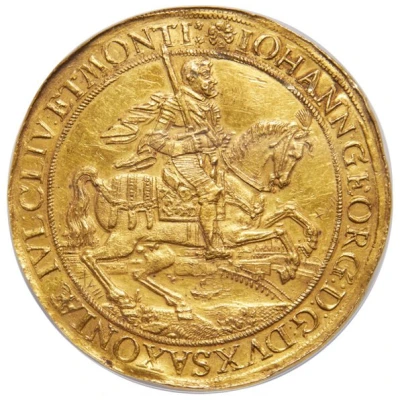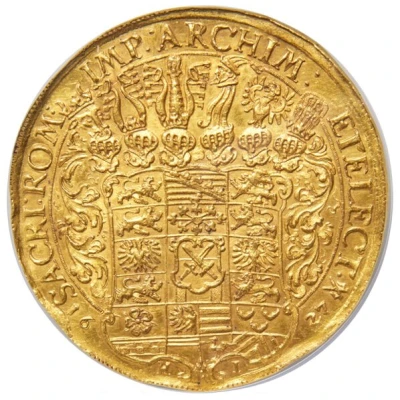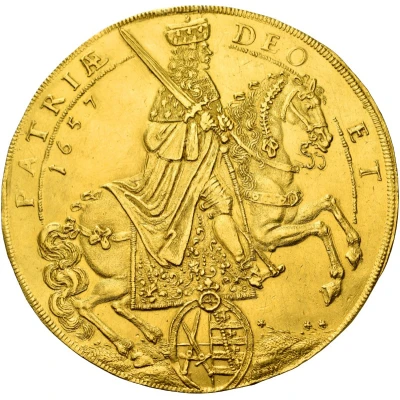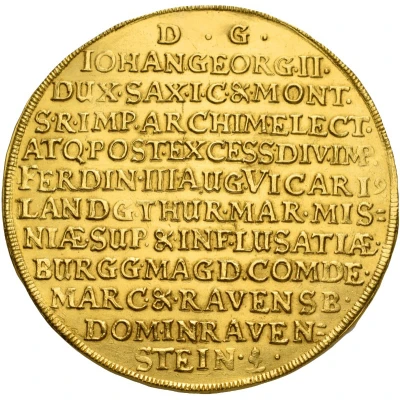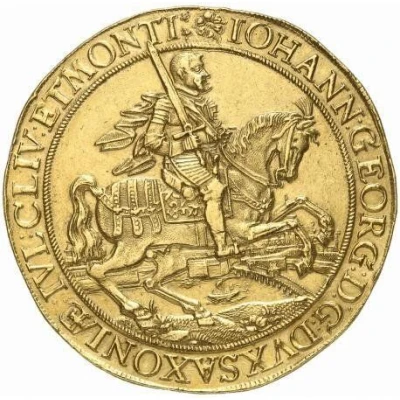
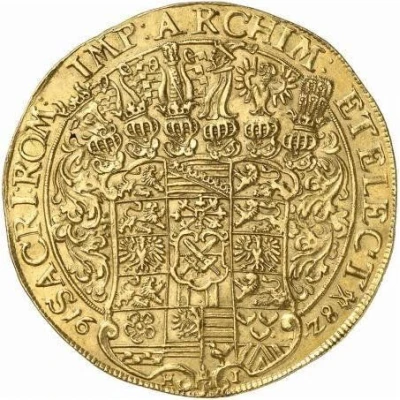

© Fritz Rudolf Künker GmbH & Co. KG, Osnabrück and Lübke & Wiedemann KG, Leonberg
20 Ducat - John George I
1628 year| Gold (.986) | 70 g | - |
| Issuer | Electorate of Saxony (Albertinian Line) (German States) |
|---|---|
| Prince elector | John George I (Hans Georg I) (1591-1656) |
| Type | Standard circulation coin |
| Year | 1628 |
| Value | 20 Ducats (20 Dukaten) (70) |
| Currency | Thaler (1493-1805) |
| Composition | Gold (.986) |
| Weight | 70 g |
| Shape | Round |
| Demonetized | Yes |
| Updated | 2024-10-05 |
| Numista | N#325538 |
|---|---|
| Rarity index | 100% |
Reverse
6-fold helmeted arms
Script: Latin
Lettering:
SACRI : ROM : - IMP : A - RCHIM : - ET ELECT
16 28
Interesting fact
One interesting fact about the 20 Ducat coin from the Electorate of Saxony (Albertinian Line) is that it was minted during a time of great economic and political change in Europe. The coin was issued in 1628, just a few years after the Thirty Years' War had ravaged much of the continent, and it marked a significant shift in the way that currency was produced and used. The use of gold in the coin's minting was a deliberate choice, as it was seen as a symbol of wealth and stability in a time of great uncertainty. The coin's design, featuring John George I, the Elector of Saxony, was also a statement of power and authority, as the Electorate of Saxony was one of the most powerful states in the German region at the time. Overall, the 20 Ducat coin from the Electorate of Saxony (Albertinian Line) is a fascinating piece of history that offers a glimpse into the complex political and economic landscape of 17th-century Europe.
